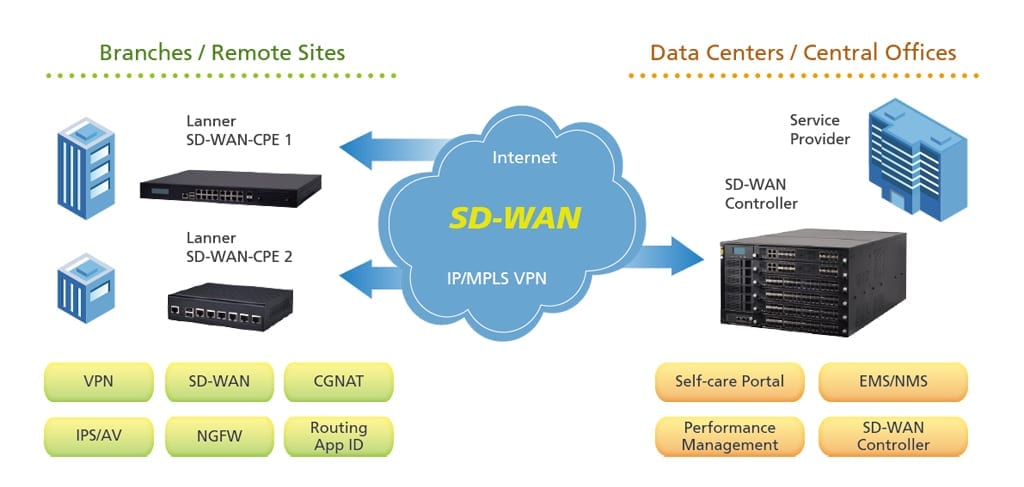As we know software defined networking (SDN) is already becoming a more and more popular investment among multi-branch enterprises with help from drivers such as software-defined wide area networks (SD WAN) being deployed in various ways across nearly every industry.
However, this doesn’t mean that everyone is onboard with SDN quite yet.
There are various reasons as to why some organizations may be hesitant to begin transitioning towards software defined networking such as the cost of new technology or the effort required to deploy it.
Although, there are alternative options available to those that are willing to invest in them.
Do-it-yourself, fully managed, or hybrid deployment options are all available for SD WAN and, in this article, we’ll be taking a look at all three in a little more detail as well as attempt to determine where or when best each three could be deployed.
Whether you’re looking to deploy your SD WAN yourself, or want to buy it as a complete managed package, we’ll try and make that decision easier by informing you of the pros and cons of each deployment option.
1-DIY
Do it yourself, or DIY SD WAN deployments are one way in which businesses and enterprises are looking to begin transitioning to SDN. Self-managing your SD WAN gives you unlimited control over every aspect of your deployment, however, it does limit you to what you are able to execute.
In a DIY scenario, businesses own, deploy and manage their own SD WAN devices and equipment as well as looking after the software and network connections themselves too.
Often, larger corporations and multi-nationals are the entities with the resources and know-how to manage their own SD WAN deployment in-house.
Staff and IT resources are usually the two biggest issues for companies looking to deploy and manage their own SD WAN and, for these reasons, companies with larger people and technical resources, as well as the knowledge to do so, are more likely to implement a DIY SD WAN deployment.
One of the pitfalls of a DIY SD WAN is having to minimize the number of equipment providers used so as not to have to fork out extra bridging technologies from two different suppliers. This also creates additional, potentially disruptive, work in the day-to-day maintenance of the chosen system as only staff with the technical knowledge will be able to implement changes or deal with technological issues.
2-Fully Managed
Fully managed SD WAN, or SD WAN as a service, is a deployment method where businesses and organizations rely on their service providers to install their chosen solution and provide additional support services when required.
In this role, managed service providers (MSP’s) manage the edge CPE devices found in-house, manage and procure access links from other MSP’s, and manage the day-today network operations of the SD WAN deployment for the customer.
This is great for smaller companies that lack the finance or skills-base needed to manage their own SD WAN deployment as it allows them to reap the benefits of software-defined networking while not having to leverage staff or IT resources from elsewhere.
Many smaller companies will also tend to quite often look to fully managed SD WAN services as a way of beginning the transition to software-defined networking as they are able to use the opportunity to learn more about SD WAN and SDN from their service providers.
Managed SD WAN deployments are also able to offer a unified view of network, access and transport solutions from different providers as well as provide service-level agreements (SLAs) that guarantee quality performance from networks and applications across distributed WAN locations.
Some fully-managed SD WAN solutions also allow for the gradual transition to a hybrid deployment model.
3-Hybrid
Hybrid SD WAN deployment models focus on the co-managing of the chosen SD WAN solution by both the customer and their network service provider.
In a hybrid model, businesses and enterprises are free to create their own security and application policies for the specific type of deployment they have in mind, while their managed service provider would manage the customer experience and connectivity aspects while also guaranteeing any network SLAs.
This deployment model is becoming more and more popular as SD WAN, and SDN in general, becomes more commonplace throughout the workplace and enterprises become more confident in their ability to manage their own solutions.
Hybrid SD WAN deployment also allows managed service providers to offer enhanced services such as increasingly advanced analytics and higher visibility integration as well as technical consultation services on behalf of the enterprise customers they co-manage with.
All in all, hybrid SD WAN models are quickly becoming the most popular of the three available deployments.
This is due to several reasons including their flexibility, practicality, and the fact they benefit both customer and managed service provider alike. With this in mind, expect to see much more hybrid SD WAN deployments pushing software-defined networking further on into the future.










